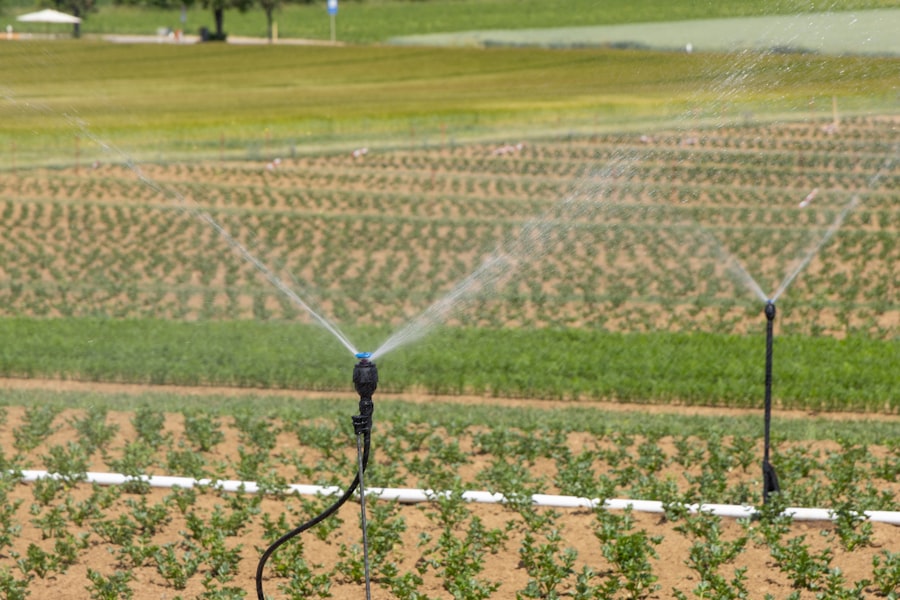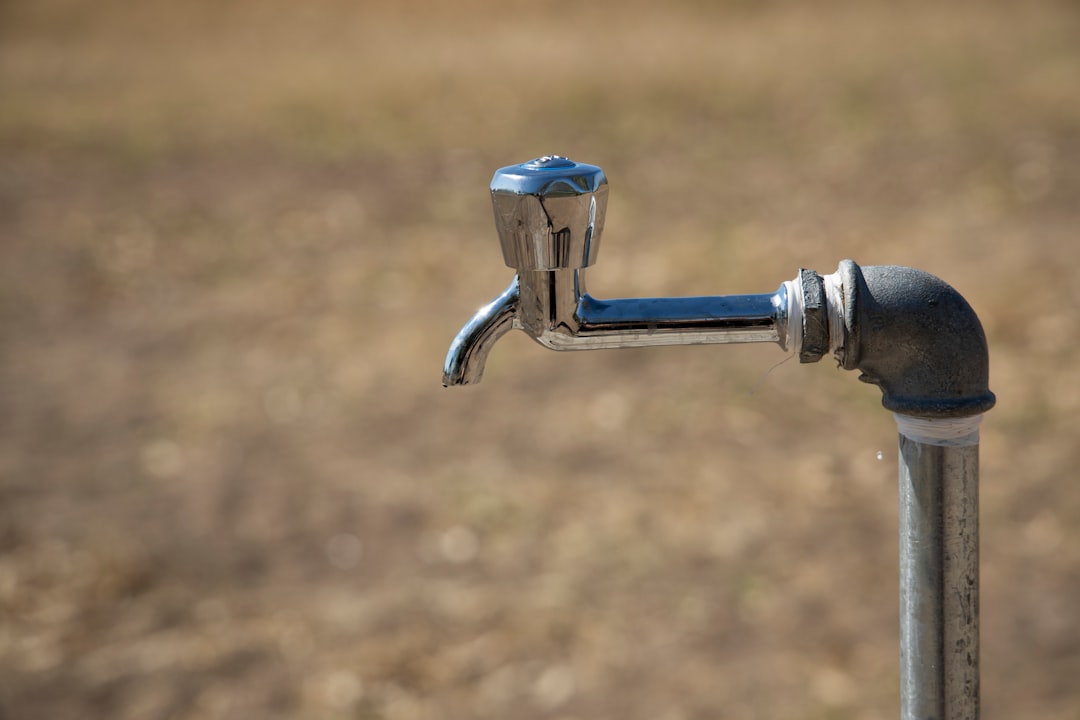Water scarcity poses a significant threat to agricultural productivity and food security worldwide.
Farmers are increasingly facing challenges such as reduced crop yields, soil degradation, and increased competition for water from urban areas.
The consequences of water scarcity extend beyond individual farms; they ripple through entire communities and economies, affecting food prices and availability. The impact of water scarcity on farmland is multifaceted. In regions where irrigation is essential for crop growth, insufficient water supply can lead to crop failures and economic losses.
Farmers may be forced to abandon traditional practices that have sustained them for generations, leading to a decline in agricultural biodiversity. Moreover, the stress on water resources can exacerbate conflicts over water rights, further complicating the landscape of agricultural production. Understanding these dynamics is crucial for developing effective strategies to mitigate the effects of water scarcity on farmland.
Key Takeaways
- Water scarcity can lead to reduced crop yields and lower agricultural productivity
- Sustainable irrigation practices can help conserve water and minimize water wastage on farmland
- Investing in water-efficient technologies can improve water usage and reduce water consumption in agriculture
- Drip irrigation systems can deliver water directly to the roots of plants, minimizing water loss through evaporation
- Crop rotation and cover crops can help maintain soil health and improve water retention on farmland
Implementing Sustainable Irrigation Practices
To combat the challenges posed by water scarcity, implementing sustainable irrigation practices is essential. These practices not only conserve water but also enhance the resilience of agricultural systems. Techniques such as scheduling irrigation based on weather forecasts and soil moisture levels can significantly reduce water waste.
By adopting a more strategic approach to irrigation, farmers can ensure that crops receive the necessary hydration without over-extracting from local water sources. Moreover, sustainable irrigation practices often involve the integration of advanced technologies that monitor and manage water usage more effectively. For instance, using sensors to gauge soil moisture can help farmers determine the optimal times for irrigation, thereby minimizing unnecessary applications.
Additionally, educating farmers about the benefits of rainwater harvesting and the use of mulching can further promote sustainable practices that protect both crops and water resources.
Investing in Water-efficient Technologies

Investing in water-efficient technologies is a critical step toward addressing the challenges of water scarcity in agriculture. Innovations such as automated irrigation systems, moisture sensors, and weather-based controllers can significantly enhance water management on farms. These technologies allow farmers to apply water more precisely, reducing waste and ensuring that crops receive adequate hydration.
Furthermore, advancements in data analytics and remote sensing have opened new avenues for optimizing water use in agriculture. By analyzing data on weather patterns, soil conditions, and crop needs, farmers can make informed decisions about when and how much to irrigate. This not only conserves water but also improves crop yields and overall farm productivity.
As the agricultural sector continues to evolve, embracing these technologies will be vital for sustainable farming practices.
Utilizing Drip Irrigation Systems
| Metrics | Data |
|---|---|
| Water Usage | 20-50% less water compared to other irrigation methods |
| Yield Increase | Up to 50% increase in crop yield |
| Energy Efficiency | Uses less energy compared to other irrigation methods |
| Weed Control | Reduces weed growth due to targeted water delivery |
Drip irrigation systems represent one of the most efficient methods for delivering water directly to plant roots. This technique minimizes evaporation and runoff, ensuring that every drop of water counts. By using a network of tubing and emitters, drip irrigation allows farmers to provide precise amounts of water to their crops, tailored to their specific needs.
This targeted approach not only conserves water but also promotes healthier plant growth. In addition to conserving water, drip irrigation systems can lead to improved crop quality and higher yields. By maintaining consistent moisture levels in the soil, plants are less stressed and can focus their energy on growth and fruit production.
Furthermore, drip irrigation reduces weed growth by delivering water directly to the plants, which can help decrease competition for resources. As more farmers adopt this technology, the potential for increased agricultural sustainability becomes increasingly apparent.
Adopting Crop Rotation and Cover Crops
Crop rotation and the use of cover crops are essential practices that contribute to sustainable agriculture and effective water management. By rotating crops each season, farmers can improve soil health and reduce pest populations, which in turn enhances resilience against drought conditions. Different crops have varying root structures and nutrient requirements, allowing for better utilization of soil resources and minimizing nutrient depletion.
Cover crops play a complementary role by protecting the soil during off-seasons and improving its structure. These crops help retain moisture, reduce erosion, and enhance organic matter content in the soil. Additionally, cover crops can suppress weeds and improve nutrient cycling, ultimately leading to healthier soils that require less irrigation.
By integrating these practices into their farming systems, farmers can create a more sustainable approach to agriculture that conserves water while maintaining productivity.
Promoting Soil Health and Water Retention

Soil health is a critical component of effective water management in agriculture. Healthy soils have improved structure, increased organic matter content, and enhanced microbial activity, all of which contribute to better water retention capabilities. Practices such as reduced tillage, organic amendments, and mulching can significantly enhance soil health and its ability to retain moisture.
Promoting soil health not only benefits individual farms but also contributes to broader environmental goals. Healthy soils act as carbon sinks, helping mitigate climate change while supporting biodiversity. By investing in soil health initiatives, farmers can create resilient agricultural systems that thrive even in the face of water scarcity.
This holistic approach recognizes the interconnectedness of soil health, water management, and sustainable farming practices.
Encouraging Responsible Water Usage
Encouraging responsible water usage among farmers is essential for addressing the challenges posed by water scarcity. This involves fostering a culture of conservation where farmers are aware of their water consumption patterns and actively seek ways to reduce waste. Education plays a pivotal role in this process; workshops and training sessions can equip farmers with the knowledge they need to implement efficient practices.
Moreover, promoting community engagement around responsible water usage can amplify these efforts. When farmers collaborate with one another to share best practices and success stories, they create a supportive network that fosters innovation and accountability. By collectively committing to responsible water usage, farming communities can make significant strides toward sustainable agriculture while safeguarding vital water resources for future generations.
Developing Water Management Plans
Developing comprehensive water management plans is crucial for addressing the complexities of water scarcity in agriculture. These plans should encompass strategies for efficient water use, conservation measures, and contingency plans for drought conditions. By taking a proactive approach to water management, farmers can better navigate the uncertainties associated with climate change and fluctuating water availability.
A well-structured water management plan also involves collaboration with local stakeholders, including government agencies and environmental organizations. By working together, farmers can access resources and support that enhance their ability to manage water effectively. Additionally, these plans should be adaptable; as conditions change over time, farmers must be prepared to adjust their strategies accordingly to ensure long-term sustainability.
Exploring Alternative Water Sources
Exploring alternative water sources is an innovative approach to mitigating the impacts of water scarcity on agriculture. Rainwater harvesting systems can capture and store precipitation for later use during dry periods, providing a valuable resource for irrigation. Additionally, treated wastewater can be repurposed for agricultural use when managed properly, offering a sustainable solution to supplement freshwater supplies.
The exploration of alternative sources also includes investing in desalination technologies in coastal regions where freshwater is scarce but seawater is abundant. While these technologies may require significant initial investment and energy resources, they hold promise for providing reliable water supplies in arid areas. By diversifying their water sources, farmers can enhance their resilience against droughts and ensure a more stable supply for their crops.
Collaborating with Local Water Authorities
Collaboration with local water authorities is essential for effective water management in agriculture. These authorities often possess valuable data on regional water availability and usage patterns that can inform farmers’ decisions. By establishing partnerships with these organizations, farmers can gain access to resources such as technical assistance, funding opportunities, and educational programs focused on sustainable practices.
Furthermore, collaboration fosters a sense of community responsibility regarding water conservation efforts. When farmers work alongside local authorities to develop policies that promote responsible usage and equitable distribution of water resources, they contribute to a more sustainable agricultural landscape. This cooperative approach not only benefits individual farms but also strengthens the resilience of entire agricultural regions.
Educating Farmers on Water Conservation Practices
Education is a cornerstone of promoting effective water conservation practices among farmers. Providing training programs that focus on innovative techniques for irrigation management, soil health improvement, and crop selection can empower farmers to make informed decisions about their operations. Workshops led by experts in sustainable agriculture can offer practical insights into how farmers can adapt their practices to conserve water while maintaining productivity.
Additionally, leveraging technology for education can enhance outreach efforts significantly. Online platforms and mobile applications can provide farmers with real-time information about weather patterns, soil moisture levels, and best practices for irrigation management. By equipping farmers with knowledge and tools tailored to their specific needs, the agricultural community can collectively work toward a more sustainable future that prioritizes responsible water usage amidst growing challenges related to scarcity.
In recent years, the issue of water scarcity has become increasingly critical, particularly in regions heavily reliant on agriculture. Farmland, which is essential for food production, is facing unprecedented challenges due to diminishing water resources. This situation is exacerbated by climate change, which alters precipitation patterns and increases the frequency of droughts. An insightful article on this topic can be found on How Wealth Grows, which discusses the intricate relationship between farmland management and water conservation strategies. For more information, you can read the full article here.
WATCH THIS! 🫣Why Wall Street Is Buying Up America’s Farmland (And Why It Should Terrify You)
FAQs
What is farmland and water scarcity?
Farmland and water scarcity refers to the limited availability of water for agricultural purposes, which can lead to reduced productivity and potential food shortages.
What causes farmland and water scarcity?
Farmland and water scarcity can be caused by a variety of factors, including climate change, overuse of water resources, pollution, and inefficient irrigation practices.
How does farmland and water scarcity impact agriculture?
Farmland and water scarcity can lead to reduced crop yields, increased production costs, and decreased agricultural productivity. This can ultimately result in food insecurity and economic hardship for farmers.
What are the potential solutions to farmland and water scarcity?
Potential solutions to farmland and water scarcity include implementing more efficient irrigation techniques, investing in water-saving technologies, promoting sustainable water management practices, and developing drought-resistant crop varieties.
What are the global implications of farmland and water scarcity?
Farmland and water scarcity can have significant global implications, including potential food shortages, increased food prices, and social and political instability in affected regions. It also highlights the need for international cooperation and sustainable water management practices.
